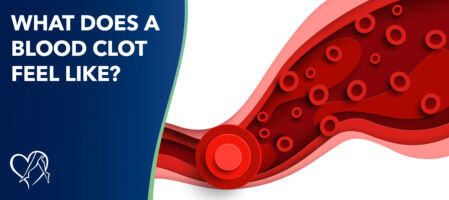
Understanding what a blood clot feels like and recognizing the associated symptoms is crucial for early detection and prompt medical intervention. Blood clots can have serious consequences, including heart attacks, strokes, and pulmonary embolisms, so it's essential to be vigilant, especially if you have risk factors or a family history of blood clots.
Blood clots are relatively common and form whenever we get a superficial cut, scrape, or bruise on our skin. Other kinds of blood clots can also have serious consequences if they cause a blockage affecting the heart, lungs, and other organs. According to Yale Medicine, blood clots are usually harmless; however, when blood clots form within blood vessels and obstruct blood flow (a condition called thrombosis), they can be deadly.
Understanding what a blood clot feels like is essential because early detection and medical intervention can be lifesaving. Let’s explore the signs, symptoms, and risk factors associated with blood clots so you can take charge of your health and well-being regarding this potentially life-threatening condition.
A blood clot is a gel-like mass that forms when the blood thickens and clumps together. This natural process is crucial for stopping bleeding when you have a cut or injury, but it can be problematic when a clot forms inappropriately inside a blood vessel.
There are two main types of blood clots:
Blood clots can manifest with a range of symptoms, and how intensely one feels a blood clot depends on factors such as the size, type, and location of the clot. Here are common sensations associated with blood clots:
It's important to note that while these are common signs of blood clots, they can vary in intensity, and some individuals may not experience any symptoms at all.
Blood clots can occur in various parts of the body. Some common locations for blood clots include:
If you suspect you have a blood clot or experience any symptoms associated with blood clots, it's crucial to seek medical help promptly. Early diagnosis and treatment are essential for preventing complications. Here's when to seek immediate medical attention:
Sudden severe symptoms:
If you experience sudden and severe symptoms such as chest pain, difficulty breathing, or loss of consciousness, call 911 or go to the nearest emergency room.
Symptoms persist or worsen:
If you notice any common symptoms of blood clots (pain, swelling, skin changes, numbness) that persist or worsen, contact your healthcare provider.
History of clots or risk factors:
If you have a history of blood clots or known risk factors (e.g., family history, recent surgery, prolonged immobility), consult your healthcare provider.
Medications:
If you are taking medications for a known clotting disorder or are on anticoagulants (blood thinners), and you experience new or unusual symptoms, seek medical advice.
Remember that blood clots can be life-threatening, and early intervention is essential. That’s why Center for Vein Restoration (CVR) offers a same-day DVT-rule-out service. Our hotline is 877-SCAN-DVT (877-722-6388).
Several factors increase the risk of developing blood clots. These risk factors can be grouped into the following categories:
While not all risk factors can be controlled, there are steps you can take to reduce your risk of developing blood clots:
Being informed about the signs and symptoms of blood clots empowers you to recognize potential issues early and seek medical attention when needed. It's an essential first step in safeguarding yourself and your loved ones from the potential risks associated with blood clots.
According to Johns Hopkins Medicine, severe varicose veins are a known risk factor for developing blood clots in the deep veins. Center for Vein Restoration (CVR) can help. As the nation’s most respected leader in vein care, the board-certified vein experts at CVR can diagnose and treat damaged or weakened blood vessels before a blood clot has a chance to form.
CVR has 110+ vein clinic locations across the United States. There’s probably a CVR vein center near you. CVR accepts many insurances, including Aetna, Amerigroup, Anthem, Blue Cross/Blue Shield, Cigna, MultiPlan, Medicaid, Medicare, and more.
Whether you're proactively managing risk factors or simply staying vigilant, knowledge is your greatest ally to ensure a bright, clot-free future. Call 240-965-3915 to speak to a Patient Services Representative or schedule your consultation online at a CVR near you today.